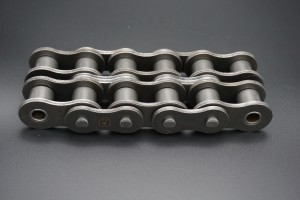How to Properly Lubricate Stainless Steel Chains to Extend Their Service Life
Introduction
In 2025, the demand for high-quality stainless steel chains continues to grow across various industries. For businesses targeting international wholesale buyers, understanding and communicating the proper lubrication methods for these chains is crucial. This blog post will delve into the importance of lubrication, the types of lubricants suitable for stainless steel chains, effective lubrication techniques, and additional considerations to maximize chain longevity.
The Importance of Lubrication
Proper lubrication is essential for maintaining the efficiency and extending the service life of stainless steel chains. When chains are inadequately lubricated, they become susceptible to increased wear and tear, corrosion, and potential failure. Lubrication reduces friction between moving parts, prevents the ingress of contaminants, and helps dissipate heat generated during operation. By implementing a consistent lubrication routine, businesses can significantly reduce maintenance costs and downtime associated with chain replacements.
Choosing the Right Lubricant
Selecting an appropriate lubricant is the first step towards effective chain maintenance. For stainless steel chains, it’s vital to choose a lubricant that offers excellent adhesion, superior lubricity, and resistance to oxidation and evaporation. High-quality synthetic lubricants are often preferred due to their enhanced performance in extreme conditions. These lubricants are formulated to withstand high temperatures, resist water washout, and provide long-lasting protection. Additionally, consider the specific operating environment of the chains when selecting a lubricant. For instance, food-grade lubricants are necessary for chains used in food processing facilities to ensure compliance with safety standards.
Effective Lubrication Techniques
1. Drip Lubrication
Drip lubrication involves applying oil drops to the chain’s hinge points at regular intervals. This method ensures a consistent supply of lubricant without over-application. The oil is typically delivered through a drip oil cup, with the flow rate adjusted based on the chain’s speed and load conditions. For single-row chains, a drip rate of 5 to 20 drops per minute is generally recommended. It’s crucial to position the drip accurately to target the chain’s pivot points effectively.
2. Spray Lubrication
Spray lubrication delivers a fine mist of lubricant directly onto the chain’s components. This technique is particularly useful for chains operating at higher speeds or in environments where precise lubricant application is challenging. The spray should be directed to cover the entire width of the chain, ensuring even distribution. Specialized spray nozzles can be employed to achieve optimal coverage and minimize overspray.
3. Oil Bath or Sump Lubrication
In oil bath lubrication, the lower portion of the chain runs through an oil reservoir. This method is effective for chains operating in enclosed systems or where continuous lubricant circulation is desired. The oil level should be maintained at the chain’s pitch line to ensure adequate lubrication without submerging the entire chain. Oil bath lubrication helps maintain a constant supply of lubricant and facilitates heat dissipation.
4. Brush Lubrication
Brush lubrication is a manual method where a brush or oil can is used to apply lubricant to the chain’s links and plates. While less automated than other techniques, it allows for targeted application and is suitable for chains that are not in constant operation. Regular intervals for brush lubrication should be established based on the chain’s usage frequency and operating conditions.
Cleaning and Lubrication Integration
Prior to lubrication, thorough cleaning of the stainless steel chain is essential to remove accumulated dirt, debris, and old lubricant residues. Using a mild detergent and warm water, along with a soft brush, can effectively clean the chain without causing damage. Avoid harsh chemicals or abrasive materials that might corrode or scratch the stainless steel surface. Once cleaned and dried, the chain is ready for lubrication, ensuring optimal adhesion and performance of the new lubricant.
Monitoring and Maintenance
Regular inspection of the chain’s condition is vital to identify any signs of wear, misalignment, or lubricant degradation. Establishing a maintenance schedule that includes lubrication intervals, tension checks, and component inspections helps prevent unexpected failures. Additionally, monitoring the chain’s performance through parameters such as noise levels, vibration, and efficiency can provide early indications of lubrication issues or mechanical problems.
Special Considerations for Different Environments
Chains operating in harsh environments, such as those exposed to high temperatures, moisture, or corrosive substances, require specialized lubrication strategies. In high-tem
perature settings, lubricants with high thermal stability and low evaporation rates are necessary. For chains in wet or humid conditions, water-resistant lubricants that form protective barriers against moisture ingress should be used. In corrosive environments, such as coastal areas or chemical plants, lubricants with anti-corrosive additives can help prevent premature chain degradation.
Conclusion
Proper lubrication of stainless steel chains is a fundamental practice that significantly impacts their service life and operational reliability. By understanding the importance of lubrication, selecting the right lubricants, employing effective application techniques, and adhering to maintenance schedules, businesses can ensure their chains perform optimally and require fewer replacements. This not only reduces operational costs but also enhances productivity by minimizing downtime. As international wholesale buyers seek durable and efficient solutions, providing them with comprehensive knowledge on chain lubrication positions businesses as reliable partners in meeting their industrial needs.
Post time: Mar-10-2025

